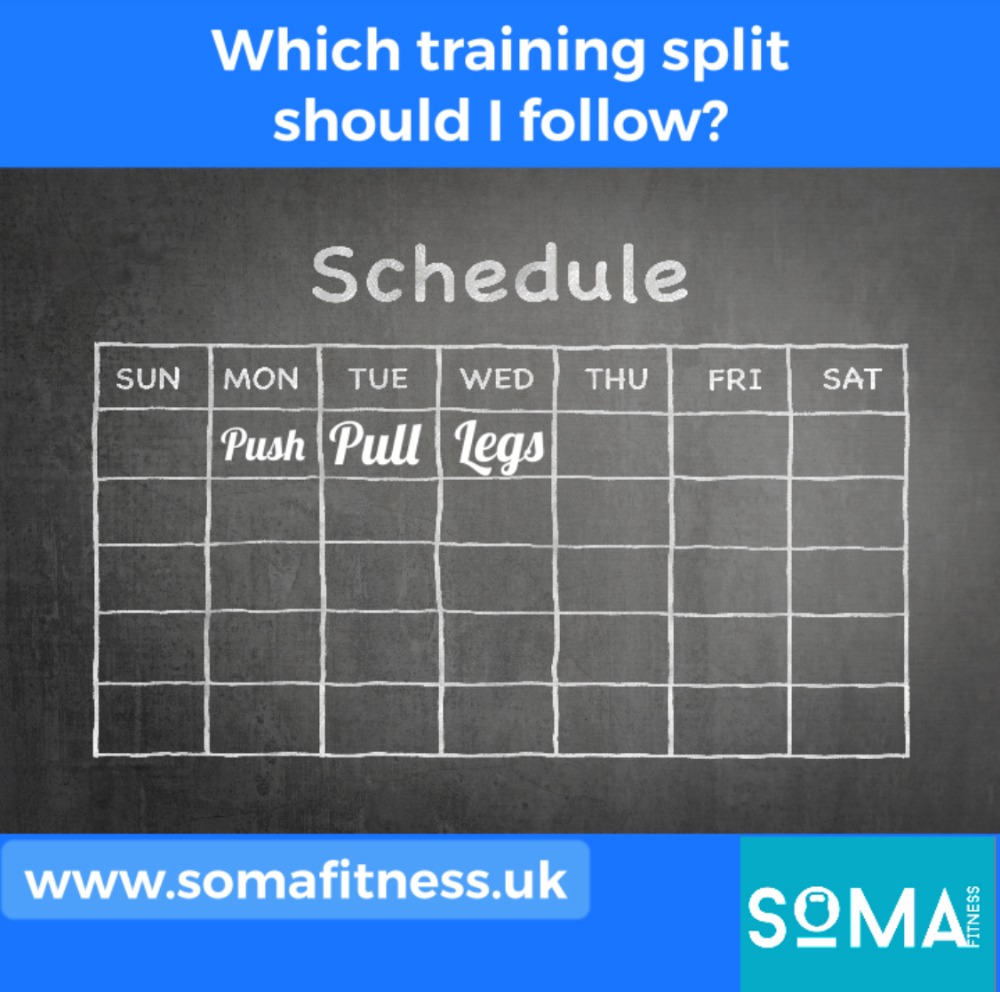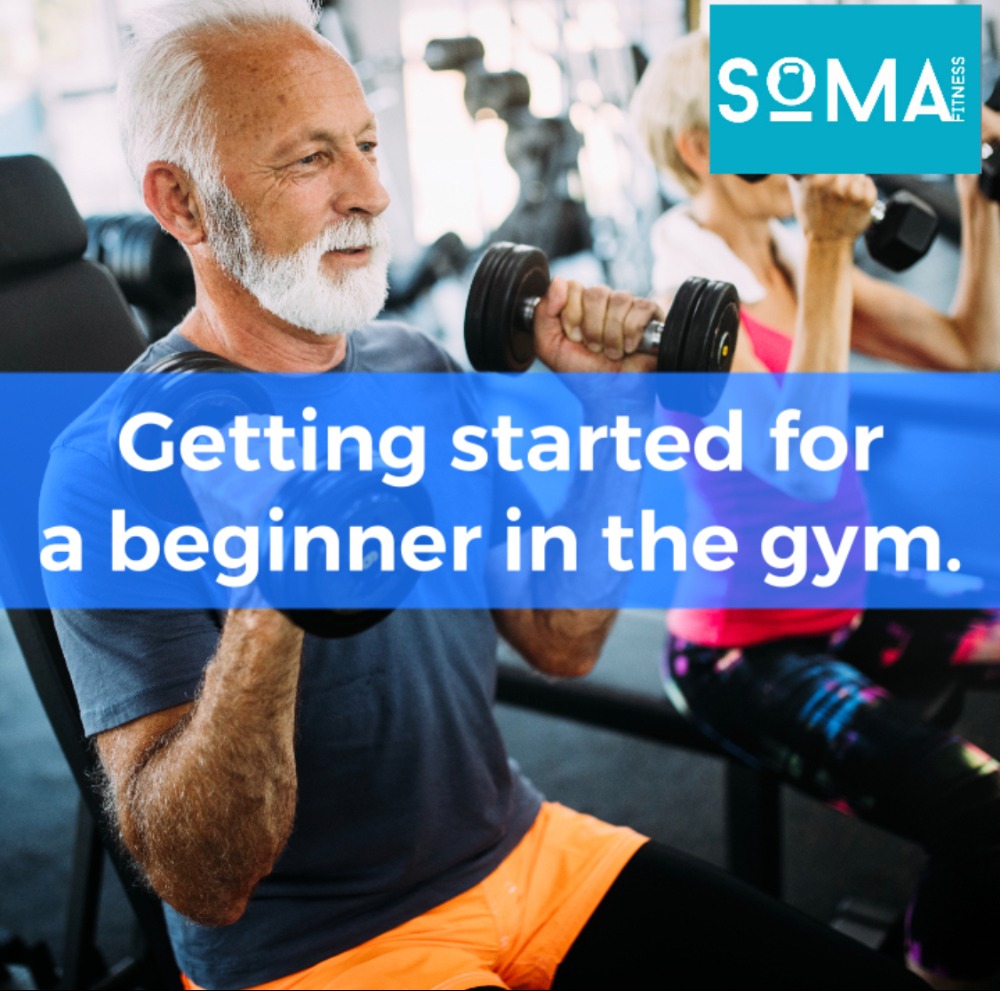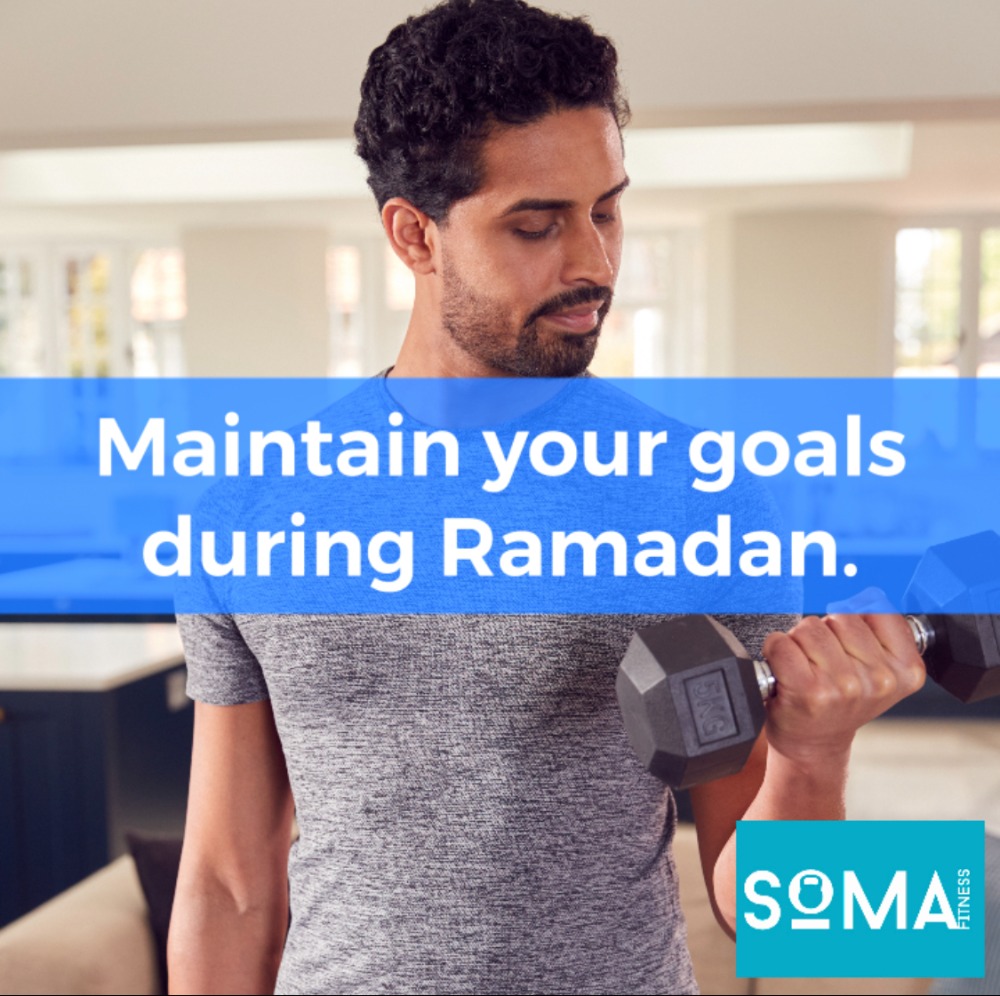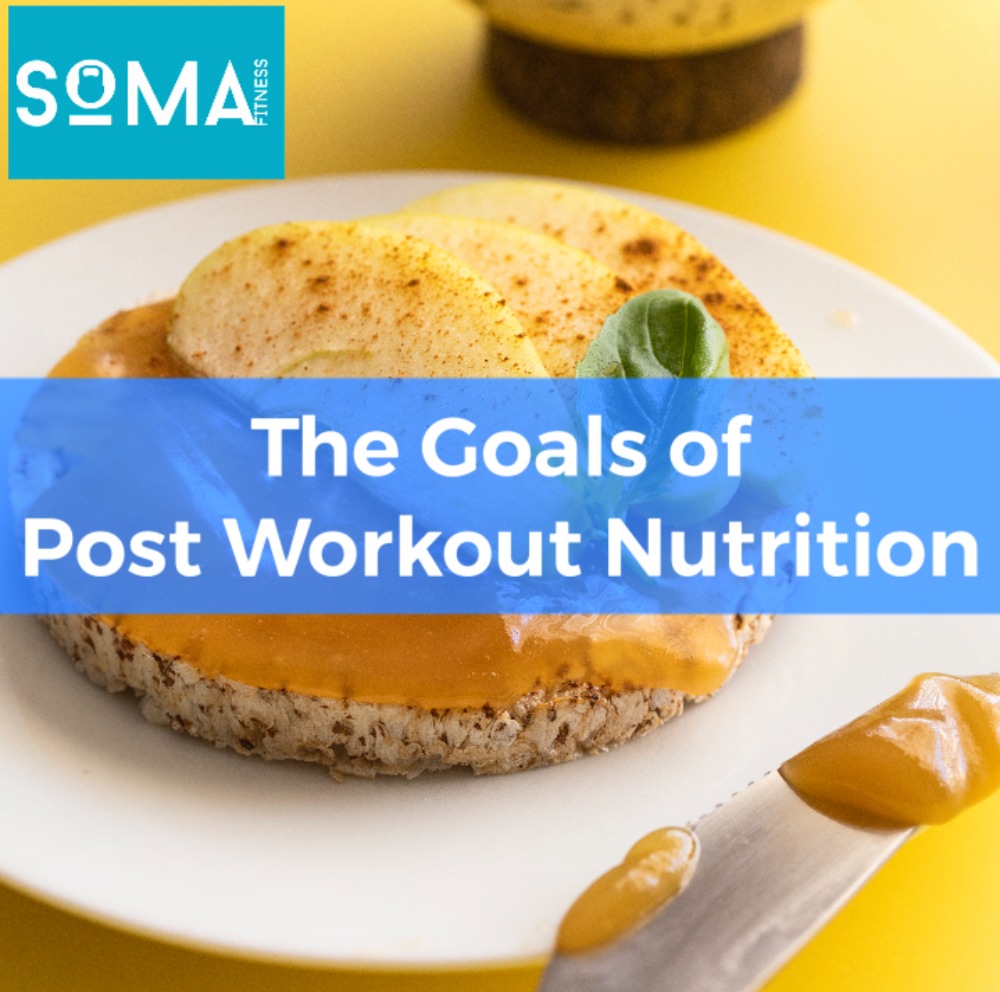Which training split should I follow?

As a personal trainer, one of the most common questions we receive from clients is, “What workout split should I follow?” The answer to that question largely depends on your overall goals and work schedule. In this article, we will explore the most popular workout splits and their benefits to see which one may suit you.
1. Full Body: The full body workout split involves targeting all major muscle groups in one workout session. This split is perfect for beginners or individuals who have limited time to devote to working out. Full body workouts are typically performed 2-3 times per week, with each workout targeting the whole body adopting some variations to the movements. This split is great for improving overall strength and hypertrophy for those with less time available within their week.
Example:
Monday – Full Body
Wednesday – Full Body
Friday – Full Body
2. Full Body Push/Pull Workout Split: The full body push/pull workout split is similar to the full body workout split, but it is broken down into two categories: push or anterior chain exercises (quadriceps, pecs, deltoids, and triceps) and pull exercises or posterior chain exercises (glutes, hamstrings, gastrocnemius, lats, rhomboids, traps, rear delts and biceps). This workout split is ideal for individuals who want to focus on higher frequencies of stimulus to each muscle group. This split can also be performed 4-6 times per week.
Example A:
4 Day Split
Monday – Full Body Push
Tuesday – Full Body Pull
Thursday – Full Body Push
Friday – Full Body Pull
Example B:
6 Day Split
Monday – Full Body Push
Tuesday – Full Body Pull
Wednesday – Full Body Push
Thursday – Full Body Pull
Friday – Full Body Push
Saturday – Full Body Pull
3. Push/Pull/Legs Workout Split: The push/pull/legs workout split is one of the most popular workout splits. This split involves targeting different muscle groups on different days. Push exercises (chest, shoulders, triceps) are targeted on day one, pull exercises (back, biceps) are targeted on day two, and legs are targeted on day three. This workout split is ideal for individuals who want to focus on building strength and muscle in their upper and lower body. This split can also be performed 3-6 times per week.
Example A:
3 Day Split
Monday – Upper Push
Wednesday – Upper Pull
Friday – Legs
Example B:
6 Day Split
Monday – Upper Push
Tuesday – Upper Pull
Wednesday – Legs
Thursday – Upper Push
Friday – Upper Pull
Saturday – Legs
4. Upper Body/Lower Body Workout Split: The upper body/lower body workout split involves targeting different muscle groups on different days. The upper body is targeted on day one, and the lower body is targeted on day two. This split is great for individuals who want to focus on building strength in their upper and lower body but may not have the time to devote to a full body workout split. This split can also be performed 2-4 times per week.
Example A:
2 Day Split
Tuesday – Upper
Thursday – Lower
Example B:
4 Day Split
Monday – Upper
Tuesday – Lower
Thursday – Upper
Friday – Lower
5. Hybrid Workout Split: The hybrid workout split is a combination of different workout splits. This split can be customized to meet individual fitness goals. For example, an individual may choose to perform a full body push workout on day one, a full body pull workout on day two, an upper body on day three and a lower body workout on day four. This split is great for individuals who want to challenge themselves with a variety of exercises and muscle groups. These types of splits can are used a lot by physique athletes who may want to bring up certain areas of their physique the example we have given is for an individual who may want more development from their arms and delts.
Example:
6 Day Split
Monday – Push
Tuesday – Pull
Wednesday – Legs
Thursday – Full Body Pull
Friday – Full Body Push
Saturday – Delts, Biceps and Triceps
When choosing a workout split, it is important to consider which frequency that you can keep consistent. If you are unsure which workout split is best for you, consult with our personal trainers who can help you create a customised workout plan that best suit you and your overall goals. Always remembering that consistency is key when it comes to achieving your fitness goals.










Recent Comments